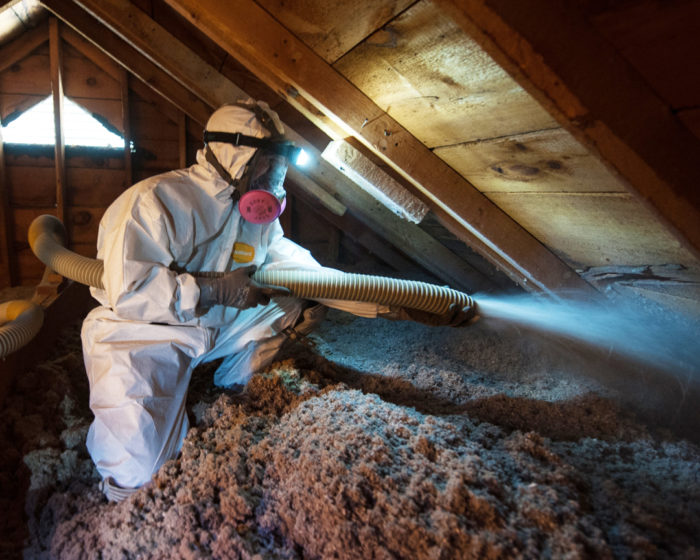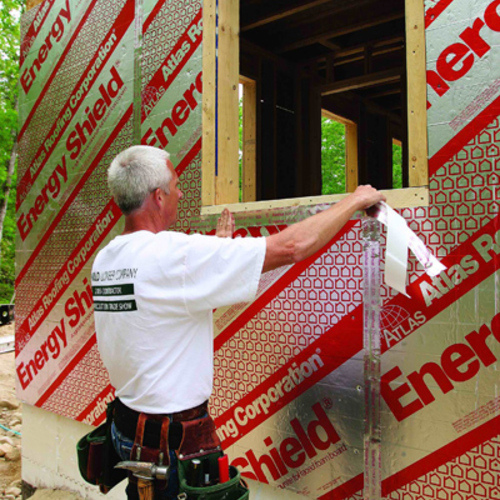
The International Energy Conservation Code (IECC) is revised every three years, and in the just-published version for 2021 the amount of attic insulation in climate zones 2 and 3 has been increased from R-38 to R-49. Commenting in a recent Q&A post, James Boris doesn’t get it.
“I can’t imagine it would save much energy,” Boris writes. “What reasons for this increase might I be overlooking? Or, more generally, what other considerations go into setting code insulation levels?”
To bolster his case, Boris offers these rough calculations: With an outdoor temperature of 100°F, an average roof temperature of about 160°F, and the air conditioner set at 78°, the difference between the roof temperature and indoor temperature is 82°F (the Delta T, or ΔT, as engineers and energy hobbyists like to call it).
Under the previous IECC, R-38 of continuous exterior foam insulation yields a ceiling temperature of 79.94°F. Under the 2021 IECC, with insulation increased to R-49, the ceiling temperature becomes 79.51°F.
“Any indoor air stratification would raise the ceiling’s base temperature, reduce Delta T, and thus lead to less difference between R-38 and R-49,” Boris says. “Am I missing something here, or putting too much emphasis on the difference between ceiling temps?” Additionally, Boris wonders how these calculations might change when comparing an unvented cathedral ceiling to a traditional, vented attic.
Boris’s questions about more stringent energy requirements are where we start this Q&A Spotlight.
First, use a simpler calculation
The real point is energy use, replies Charlie Sullivan, and the increase in attic insulation will make a difference.
“The good news is that’s a simpler calculation,” Sullivan writes. With a Delta T of 82°F, as Boris had assumed, the heat transfer is about 500 Btu/hour less with roof insulation of R-49 than it would be…
Weekly Newsletter
Get building science and energy efficiency advice, plus special offers, in your inbox.

This article is only available to GBA Prime Members
Sign up for a free trial and get instant access to this article as well as GBA’s complete library of premium articles and construction details.
Start Free TrialAlready a member? Log in















6 Comments
Great commentary, Michael. Regarding your comment, "It does not make sense to go overboard with insulation that has a high level of embodied carbon," I'll add one thing that I think you will agree with: in most cases, it doesn't make sense to use insulation that has a high level of embodied carbon in the first place, when they are alternatives that have so much lower embodied carbon, especially in new construction.
Charlie, thank you, and yes I agree with you. Typical of my writing approach, I had another thousand words that I cut to keep my response to a reasonable length. Among my cuts were recommendations for how to deal with vaulted ceilings using low-carbon insulation, which I do regularly. Using low-carbon insulation does take some forethought, or else you might end up in a situation like Boris, but I haven't found a situation yet on new construction where foam was necessary.
Looking forward to your book with more of those thousands of words.
A paragraph I cut from my response but I'm curious if others have data they could share about the prevalence of building codes:
"According to Pew research (https://www.pewresearch.org/social-trends/2018/05/22/demographic-and-economic-trends-in-urban-suburban-and-rural-communities/), as of 2016, 31% of US residents live in urban areas, 55% in suburban areas and 14% in rural areas. I don’t have data but I would estimate that the vast majority of urban municipalities follow building codes, most suburban areas do, and some rural areas do--perhaps 60-80% of new construction in the US is required to follow building codes."
Something to think about in discussions about ever tightening energy codes and pushback when they impact architectural design considerations- perhaps (and I say this as a designer) it means that your design needs to sometimes have energy efficiency outweigh the aesthetics of the home. Frankly a good architect/designer is more than capable of designing a beautiful home that is also highly efficient. Its a different way of looking at home design, and sometimes the way you did it yesterday just doesn't fit the times anymore and its good to learn a new skillset and adapt to our changing environment.
Bill,
I agree. The questions I find the most frustrating on GBA concern new builds where energy efficiency wasn't considered at the design stage, and the posters find themselves boxed into a corner. Roofs seems to be the most common problem.
Log in or become a member to post a comment.
Sign up Log in